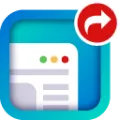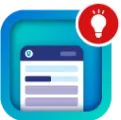Create Your Own Insights
- Create custom report types based on the Networks object.Only reports that are based on the Networks objectshow community-specific information in Community Management and Community Workspaces.Note You can create reports based on other objects and expose them in Community Management or Community Workspaces. Keep in mind that they show data from across your organization, not just for the community in which you’re viewing them.Select Networks as the primary object.Select a child object:Chatter MessagesFeed RevisionsGroupsNetwork AuditsNetwork Activity Daily MetricsNetwork Feed RevisionsNetwork MembersNetwork Membership Daily MetricsNetwork ModerationsNetwork Public Usage Daily MetricsNetwork Unique Contributor Daily MetricsRecommendation MetricTopic AssignmentsTopicsUnpublished Feed Entities
- Select Networks as the primary object.
- Select a child object:Chatter MessagesFeed RevisionsGroupsNetwork AuditsNetwork Activity Daily MetricsNetwork Feed RevisionsNetwork MembersNetwork Membership Daily MetricsNetwork ModerationsNetwork Public Usage Daily MetricsNetwork Unique Contributor Daily MetricsRecommendation MetricTopic AssignmentsTopicsUnpublished Feed Entities
- Chatter Messages
- Feed Revisions
- Groups
- Network Audits
- Network Activity Daily Metrics
- Network Feed Revisions
- Network Members
- Network Membership Daily Metrics
- Network Moderations
- Network Public Usage Daily Metrics
- Network Unique Contributor Daily Metrics
- Recommendation Metric
- Topic Assignments
- Topics
- Unpublished Feed Entities
- Use the custom report type to create an Insights report.Insights reports are justlike any other report, except they must also meet the following requirements:The report must be a tabular report.The report can’t include pagination.We recommended that your report only return 2,000 rows or less because only the first 2,000 rows are displayed in Community Management or Community Workspaces.To view “Approve” and “Delete” comment actions, you must add the FeedCommentID column to your Insights report.Be sure not to filter the report by Network ID toensure that the report dynamically displays data for the community you viewit from. Adding a Network ID filter causes the report to only show data for the community with that Network ID, regardless of which community you view it in.
- The report must be a tabular report.
- The report can’t include pagination.
- We recommended that your report only return 2,000 rows or less because only the first 2,000 rows are displayed in Community Management or Community Workspaces.
- To view “Approve” and “Delete” comment actions, you must add the FeedCommentID column to your Insights report.
- Save the report to a new report folder that you can map to in Community Management or Community Workspaces.We recommend that you create a separate report folder for each of your Insights pages. For example,create one report folder called Insights Members and another called Insights Moderation.Engagement Insights pages map to report folders in your internal org. All the reports included in that folder are displayed in the dropdown menu on the Engagement Insights page. Adding or removing an Engagement Insights report from the report folder in your internal org updates the Engagement Insights page in Community Management or Community Workspaces.
- Share your Insights report folder with your community managers.
- In Community Management or Community Workspaces, click Engagement | Settings to map Insights pages to yourreport folder.





